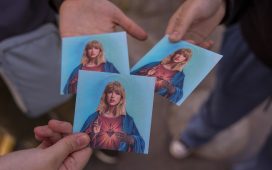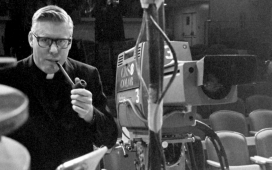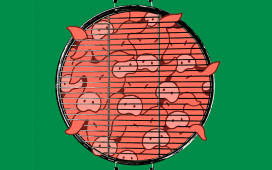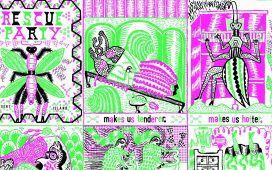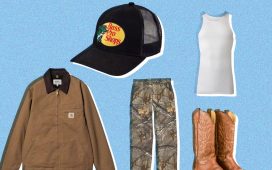This post originally appeared on Vogue.
Faced with the pandemic this year, the biennial Indigenous Fashion Week Toronto (IFWTO) chose to go virtual this time around—but if you’re thinking that meant just a handful of live-streamed runway shows, you’re greatly mistaken. Held from November 26 to 29, IFWTO drew in some of the biggest names in Indigenous fashion—including designers such as Evan Ducharme, Lesley Hampton, and streetwear brands such as Mobilize and Section 35. Now in its second year, it’s become more than a week of catwalks, and instead, a multi-platform experience, complete with special short films, a shoppable marketplace, and even live panel discussions.
IFWTO is currently one of the biggest showcases of Indigenous design in North America. The event provides a much-needed space for underrepresented talent to showcase their work on a large scale, all of whom challenge preconceived notions of what Indigenous design is and can be. Whether it’s streetwear or accessories, these designers—from a variety of tribes—all infused their work with messages of maintaining tradition and practicing sustainability.
This mindful spirit is what sets apart IFWTO from other fashion weeks, says Sage Paul, IFWTO’s founder and artistic director. “It’s based in community, and our connections to our way of life,” says Paul, who is Denesuliné. “Everything I know about being Native is from family, so it’s really important to recognize where we’ve come from, and recognize the people who pass things on to us. We are a fashion week, but it’s also about bringing people together.” Unabated by the pandemic, the fashion week is gaining traction, fast. “It’s growing much quicker than we had expected,” says Paul. “I hope that we are not only this incredible platform for designers to be able to show and sell their work, but also so that consumers can do their own research and find really cool stuff.”
Below, the five need-to-know takeaways from this year’s Indigenous Fashion Week Toronto.
1. The presentation formats were unconventional.
Over 15 Indigenous designers participated in the IFWTO “shows” this year. Their new collections were shown via short films created and directed by IFWTO, with each film featuring their pieces worn by models. The models didn’t just walk down a catwalk, rather moved around a special set in the clothes to choreography done by the Indigenous dancer Brian Solomon. “We still wanted it to feel like they were at IFTWO,” says Paul of the nontraditional format. “We still want people to feel like they’re going to a live show and that there was a vibe. We watch so much online, and we really wanted to lift people up and [have them] be excited about what they’re seeing.” The films are available to view on IFWTO’s YouTube page.
2. Collections were rooted in tradition.
As is often the case with Indigenous design, the collections shown during IFWTO this year were rooted in culture and purpose. Sisters Aunalee Boyd-Good and Sophia Seward-Good of Ay Lelum, a second-generation Coast Salish label based in Nanaimo, British Columbia, made use of their culture’s traditional prints and textiles in gowns, athleisure, and everything in between. Their collection drew references from spindle whorls and the Coast Salish imagery that would be often be found on them, such as eagles. “In Coast Salish culture, the spindle whorl is really central to women as weavers and spinners,” says Boyd-Good. Seward-Good adds, “The supernatural eagle brought the sunlight back to the people in the time of darkness. It offers hope and prayers—that we’re going to come out of this darkness.” Other designers, such as Warren Steven Scott, from the Nlaka’pamux Nation, referenced woven cedar clothing found in the Pacific Northwest and revamped it in a new, modern way. Métis designer Evan Ducharme also made use of weaving inspired by the Métis sash.

